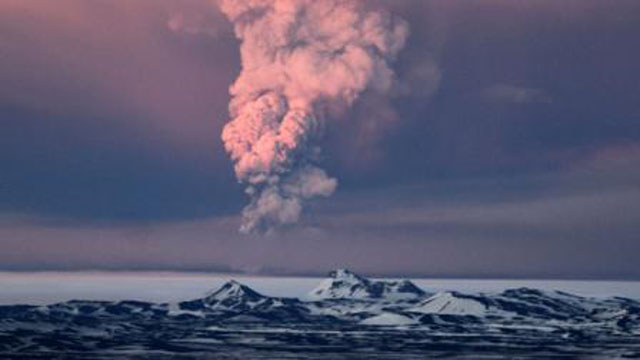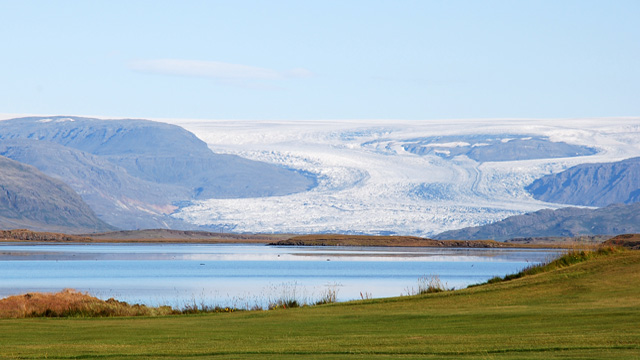Subglacial eruption underway at Eyjafjallajökull-Fimmvörduháls in Iceland

nThe steam and ash plume from the Eyjafjallajökull subglacial eruption that started early morning, April 14, 2010.
nn
Well, after the brief respite when there was speculation Eyjafjallajökull-Fimmvörduháls eruption might be over, we now know what was going on. After the original fissures ceased activity, the magma found a new route to the surface, this time underneath the Eyjafjallajökull glacier. Eruptions readers last night watched as an earthquake swarm arrived underneath the icecap, which prompted Icelandic officials to start evacuating people from the area around the volcano (photo from prior to this eruption) for fears for joklhlaups – volcanically-triggered glacial floods. These floods are started by the intense melting that occurs when basalt at 1200C meets ice – and they can be very powerful floods, moving car-to-house sized material with ease.
nn
The currently, there are reports that the new fissure that has opened underneath the Eyjafjallajökull glacier has created a hole/crater ~200 meters wide deep. The BBC has some video footage of an eruption, but it is unclear if this is just footage from earlier this month in March (impressive nevertheless). Gunnar Gudmunsson of the Icelandic Met Office thinks most of the eruption is occurring at or near the summit of the volcano underneath the ice cap. This has, of course, lead to intense melting of the glacial ice, raising water levels in drainages leading from the volcano in some cases 3 meters in a matter of hours. The south of Iceland has been told to expect flooding due to the eruption. The walking bridge near Fimmvörduháls has also been taken out by the floods, while other measures are being taken to protect roadways.
nn
The London VAAC message suggests that the eruptive plume from the eruption is at least 8000 meters tall – now this plume is likely dominantly steam with some minor ash component. The fragmentation of the lava in this situation comes from the interaction with water (mostly), so it is different that a very ash-rich Plinian ash column, but still it posed a hazard to aircraft – flights below 30,000 feet have been banned from the zones to the north and the east of the volcano. You can see some of the brown/grey ash in the foreground on some of the webcams as well.
nn
Much like the previous fissures, it is unknown how long this phase of the eruption may last. The seismic swarm that started last night has tapered off since the eruption began, but as we saw before, seismicity can ebb and flow repeatedly. The first flights over the volcano this morning spotted a trough created by the eruption in the ice cap, but no lava was spotted (although seeing conditions were poor). Haraldur Sigurdsson points out that now that the eruption is directly underneath the Eyjafjallajökull volcano, we can begin to ponder what might happen if there is any rhyolite for which the basalt to interact, but this is still speculation. We can use the 2004 eruption of Grimsvötn as a guide for subglacial eruptions, but where this new direction at Eyjafjallajökull leads is still up in the air. We should know more after the flights the Icelandic Coast Guard will be performing over the volcano during the day.

